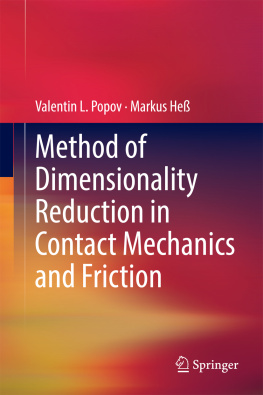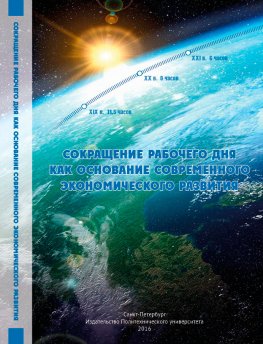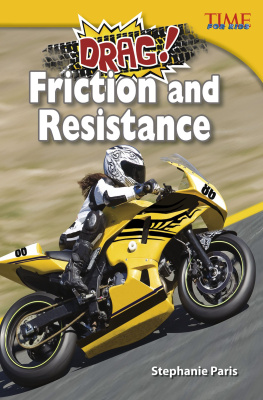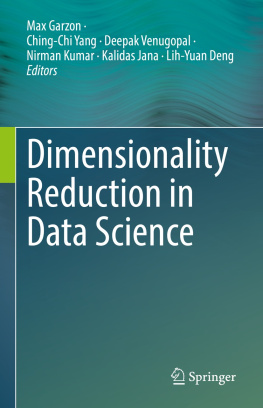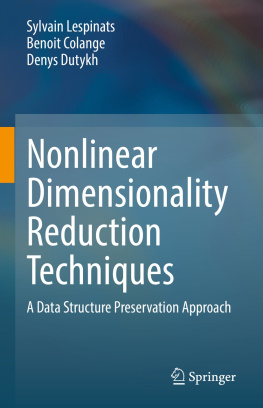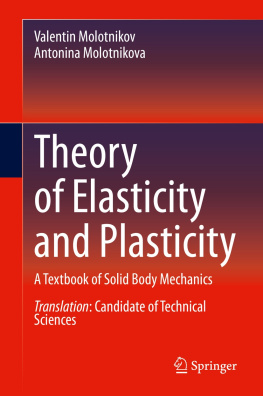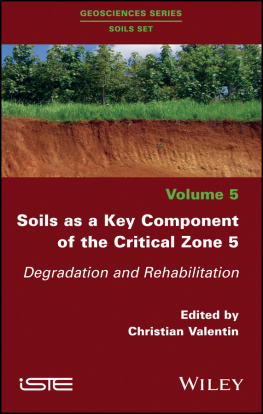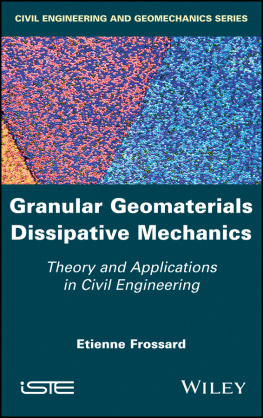1.1 Goal of This Book
The goal of this book is to describe the method of dimensionality reduction in contact mechanics and friction. Contacts between three-dimensional bodies arise in a wide variety of applications. Therefore, their simulation, both analytically and numerically, are of major importance. From a mathematical point of view, contacts are described using integral equations having mixed boundary conditions. Furthermore, the stress distribution, the displacements of the surface, and even the shape of the contact domain are generally not known in such problems []. It is, therefore, astounding that a large number of classical contact problems can be mapped to one-dimensional models of contacts with a properly defined linearly elastic foundation (Winkler foundation ). This means that the results of the one-dimensional model correspond exactly to those of a three-dimensional model. According to this mapping concept, solving contact-mechanical problems is trivialized is such a way as to require no special knowledge other than the fundamentals of algebra and calculus.
The healthy intuition of a specialist in contact mechanics completely discards the possibility of such an exact mapping of a three-dimensional problem with extensive interactions to the banal one-dimensional foundation of independent elements (spring or springdashpot combinations). Yet even the finest intuition must come to terms with mathematical truths: It has been rigorously proven mathematically for a large variety of contact problems that the one-dimensional mapping of three-dimensional contact problems results in an exact solution []. This book offers the required evidence for interested readers.
Just like every model, the method of dimensionality reduction has its domain of application. There are problems which cannot be exactly solved with this method as well as domains for which the method is not exact, but provides a very good approximation. Of course, there are also boundaries beyond which this method is no longer applicable. The method of dimensionality reduction provides exact solutions for normal and tangential contacts with arbitrary axially - symmetric bodies. Already here, the following argument may be voiced: That may well be, but contact problems with axially-symmetric bodies can also be solved in three-dimensions. The method of dimensionality reduction does not present anything new! This statement is fundamentally correct. However, the abundance of exact solutions for three-dimensional problems is strewn throughout the one-hundred year development of contact mechanics in hundreds of original publications. The authors of this book deal with contact mechanics on a daily basis and still we must admit that it took us months and years to gather and assemble the necessary solutions. The method of dimensionality reduction places this abundance of knowledge at the disposal of every engineer in a simple form, here and now, effectively and without reservation. It is, therefore, correct to say that the method of dimensionality reduction is nothing new for axially-symmetric bodies. However, it reproduces the results of a three-dimensional contact problem exactly, thereby, lending itself to being a kind of pocket edition of contact mechanics.
We would like to add that many contact problems with axially symmetric bodies are solved in principle, however, their application is extremely difficult when, for example, it comes to dynamic contacts. Also here, the method of reduction of dimensionality can be helpful, because due to its trivial formulation, it can be applied very easily either analytically or numerically and provides a convenient thinking tool.
A second large field of application for this method is the contact between rough surfaces. Not all problems involving rough surfaces can be solved with the reduction method, but only those that deal with forces and relative displacements, such as problems dealing with contact stiffness, electrical or heat conduction, and frictional force . The area of application is limited but very large and includes many problems which have meaningful implications in engineering. There are no exact solutions when it comes to rough surfaces. Therefore, we are dependent on comparisons with three-dimensional numerical solutions for the purpose of verification. Due to the fact that this method is meant to be an engineering tool, it was very important for us to ensure its applicability for rough surfaces. For this purpose, extensive three-dimensional simulations of rough surfaces with elastic [). Over this span, the reduction method results in either an (asymptotically) exact solution or a very good approximation. Here as well, the book presents evidence to these findings.
The mapping of real contact area remains beyond the realm of application. The method of dimensionality reduction is able to map contact areas for the very short initial stage of indentation, but not in a general case [].
With this book, we wish to introduce practitioners to methods which are in our opinion extremely simple, elegant, and effective. We are certain that they will find direct application in numerical simulation methods in the future.
The prospective primary application of this method lies not in the field where it yields exact solutions, but rather in the field of the contact mechanics and friction of rough surfaces. The most important advantage is the speed at which the calculations may be carried out, due to the one-dimensionality and the independent degrees of freedom. Therefore, it allows for a direct simulation of multi-scaled systems for which both the macroscopic system dynamics as well as the microscopic contact mechanics can be combined into one model.
1.2 Method of Dimensionality Reduction as the Link Between the Micro - and Macro-Scales
Since the classical works of Bowden and Tabor [] that this fractality has a significant influence on the properties of real contacts and is the actual cause for the approximate validity of Coulombs law. Contact mechanics is, therefore, a multi-scaled phenomenon. This multi-scaled nature begs the question: Which methods can be used to take all relevant scales of a dynamic system into account? One of the possibilities consists of dividing the considered scales into three domains: Micro, Meso, and Macro. On the macroscopic scales, the system is simulated explicitly with a typical mono-scale method, for instance, finite element methods. On the smallest microscales, the approach remains the same as in the past and a microscopic law of friction is defined. This can either be determined through molecular-dynamic simulations or through empirical observation. The scales between micro and macro must somehow be bridged with a method which reproduces these scales with sufficient accuracy but is no more extensive than necessary so that the respective simulations are able to be carried out on realistic time scales. For this, the method of dimensionality reduction described in this book is an excellent candidate.

